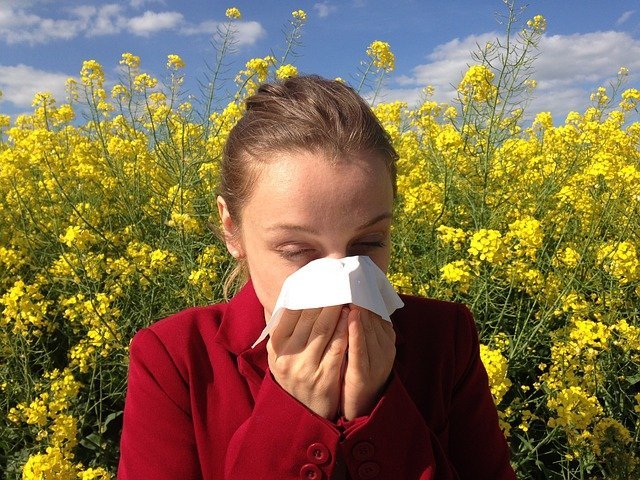
Allergy – hypersensitivity reaction of the immune system
In the case of an allergy, the immune system reacts hypersensitively and allergically to harmless environmental substances such as
- house dust (house dust allergy),
- pollen (hay fever),
- animal hair (animal hair allergy),
- certain foods (food allergy) or
- Mold (mold allergy).
Instead of only fending off harmful pathogens such as fungi, viruses or parasites, the body’s own immune system also attacks harmless components of the environment.
Furthermore, people can also have an allergic reaction to cosmetics , insecticides or medicines . In principle, anyone can become allergic. However, there is a high probability of inheriting the tendency to allergic reactions.
Homeopathic remedies are used to relieve acute symptoms. Sneezing, tearing eyes or a runny nose respond well to the medicines. The acute treatment should be followed by a constitutional treatment during the symptom-free period. The immune system is strengthened and allergies are reduced.
Which homeopathic remedies help?
Physical symptoms are described below. Choose a homeopathic remedy for allergy that best suits your situation.
Runny nose, sneezing, coughing
Acidum formicicum
Asthmatic cough with shortness of breath, itchy eyes, skin rashes, flatulence and diarrhea caused by allergies to animal dander, house dust, mold and food.
Sabadilla
Allergic runny nose with severe sneezing attacks such as with pollen or house dust allergies. The nose is sore and burning, throat and palate itchy.
Galphimia
Hypersensitivity to animal dander causing skin reactions and/or allergic rhinitis.
Sticta pulmonaria
Frequent sneezing and severe nasal congestion like hay fever. Crusts form in the nose. Secretions cannot drain. The nasal mucosa has dried out.
With skin itching
Cardiospermum
Especially in the case of allergic reactions or inflammation caused by medication or other chemical stimuli, as well as mildly allergic, itchy or less painful reactions to insect bites.
Food intolerance
China officinalis
Intolerance to foods that cause indigestion and intestinal inflammation.
Allergy symptoms
The symptoms are as varied as the allergies are:
- runny nose
- stuffy nose
- sneezing fits
- Cough
- itching
- teary eyes
- red eyes
- conjunctivitis
- Gastrointestinal complaints
- swollen tongue
- swollen mucous membranes
- skin reactions (rash)
Allergy types
Allergies are divided into four types, as they differ in the type of reaction and the allergy trigger, as well as in the time it takes for the symptoms to appear.
Type 1 – Immediate type
About 90 percent of all allergies fall under this type. The symptoms often set in just a few minutes after contact with the allergen and manifest themselves, for example, as hay fever. Typical allergies that belong to this immediate type include the
- house dust allergy,
- animal dander allergy,
- Insect bite allergy or
- allergic asthma.
However, sensitization to the allergen must have occurred before an allergic reaction can occur. Sensitization occurs with hay fever, e.g. B. through contact with certain pollen.
Type 2 and Type 3 – delayed reaction types
In type 2, the allergic reaction usually occurs after two to four hours, ie after a delay. In this reaction, the corresponding antibodies are bound directly to the surface of the body’s own cells. As a result, the body’s own cell itself becomes an antigen, which in turn has to be fought. There is a cell-destroying activity and an increase in inflammation. The resulting consequences can e.g. B. anemia or the reduction of certain white blood cells.
The symptoms of a type 3 allergic reaction are characterized by a short early phase and a peak. After initial reactions, further symptoms appear after four to six hours. Organic substances such as B. components of mold spores, a type 3 allergy can be caused. The consequence of a type 3 allergy can e.g. B. a “farmer’s lung”, which develops through frequent, intensive contact with mold and is caused by inflammation of the alveoli. Arthritis can also occur with type 3 allergies.
Type 4 – Late Response Type
The small allergens in the delayed or eczema type can penetrate the body through the horny layer of the skin. However, these must first be integrated into the epidermis and processed by certain cells. It is therefore a long time (approx. 1 to 3 days) between the time the allergen penetrates and the symptoms appear. Allergic contact dermatitis is a very good example of a delayed reaction. If there is no new contact with the allergen, the skin inflammation recedes after about three to four days. However, if the skin is already damaged, the contact allergens can penetrate more easily and the skin becomes sensitized much more quickly.






